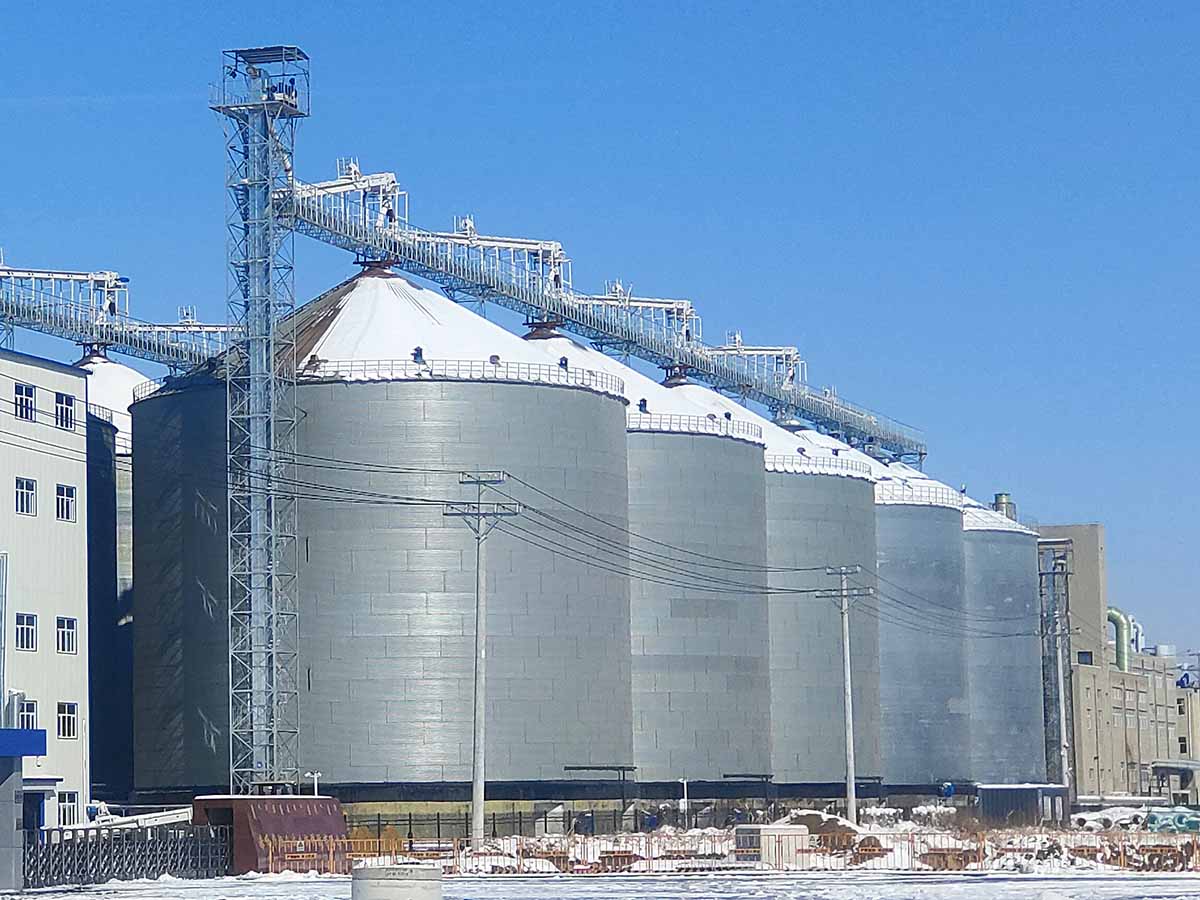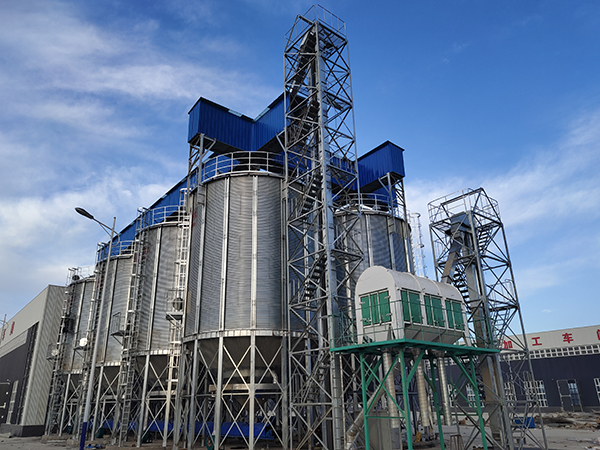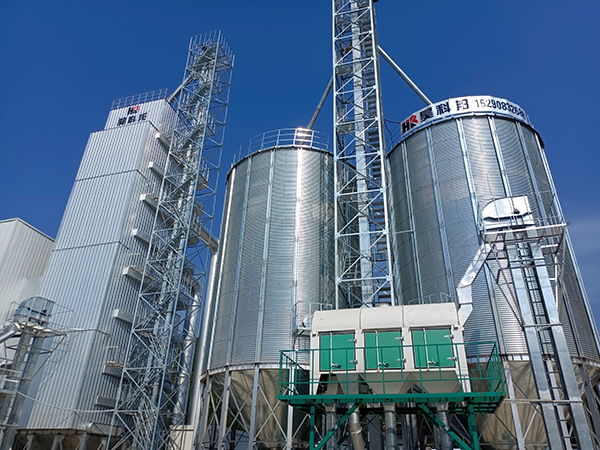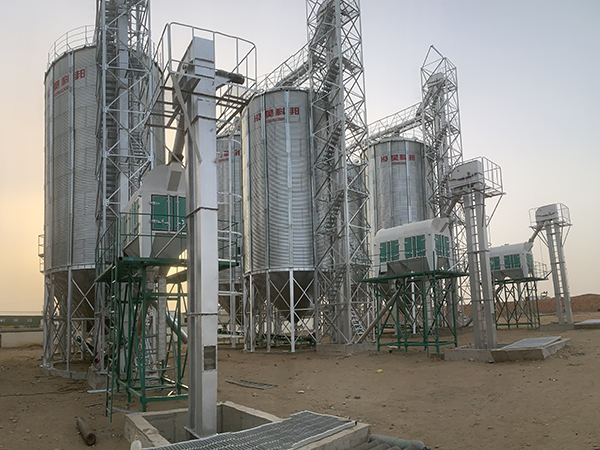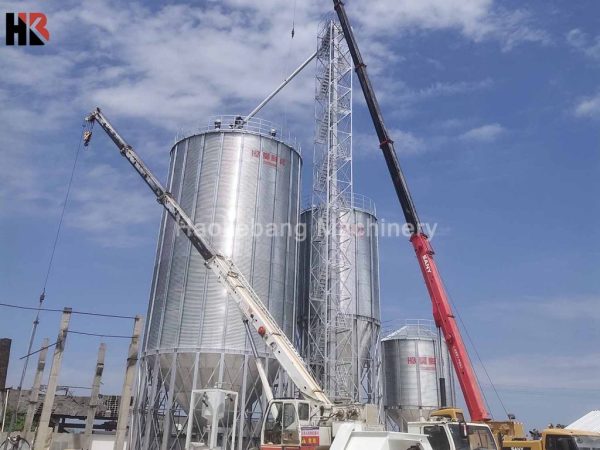pig feed silo
A pig feed silo is a facility used for storing and preserving pig feed. Typically made of metal or plastic materials, it possesses characteristics such as moisture resistance
pig feed silo Introduction
A pig feed silo is a facility used for storing and preserving pig feed. Typically made of metal or plastic materials, it possesses characteristics such as moisture resistance, insect resistance, and sealing capabilities, effectively protecting the feed from external environmental factors and maintaining its quality and freshness. Pig feed silo are usually designed with a certain capacity to meet the needs of different-scale pig farms. They are commonly installed near the farming facilities or feed processing plants for convenient storage and usage.
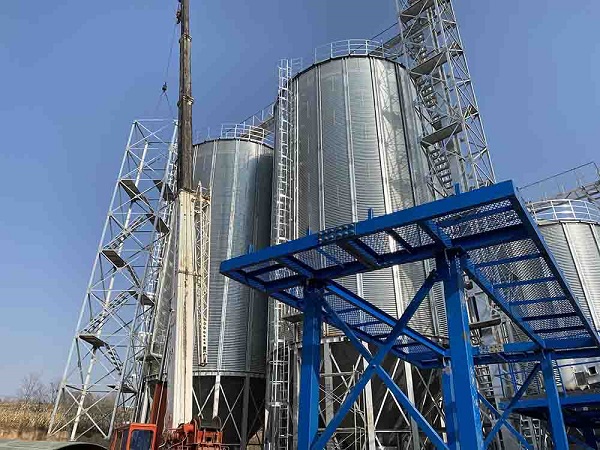
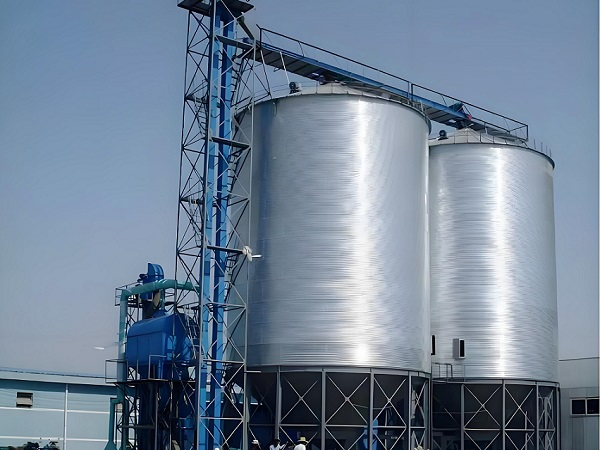
Characteristics of pig feed silo
Variety in Capacity
Pig feed silos are available in a range of capacities, from small 1.5 cubic meters to large several thousand cubic meters, catering to the needs of farms of different sizes.
Corrosion-Resistant Materials
Typically made from corrosion-resistant materials such as hot-dip galvanized steel, stainless steel, or fiberglass, ensuring the safety and reliability of feed storage over time.
Structural Stability
Designed with high stability to withstand adverse weather conditions, such as strong winds and heavy snow.
Ease of Maintenance
Features a simple structure that facilitates easy installation and maintenance, with various unloading methods available, including fluidized unloading and multi-hole unloading.
Anti-Corrosion Treatment
The galvanized layer can reach a thickness of 275 grams per square meter, effectively preventing corrosion and extending the service life.
Thermal Insulation
Some silos have a corrugated metal top that reflects sunlight and reduces the temperature inside the silo, helping to keep the feed fresh.
Effective Self-Cleaning
The conical design at the bottom aids in the flow of feed, reducing residue and facilitating cleaning.
Compatibility
Can be integrated with modern farming equipment such as automatic feeding systems, enhancing farming efficiency.
Safety Features
Some silos are designed with safety in mind, including features like weatherproof edges and safety cages for roof access ladders.
Monitoring Convenience
Modern silos are equipped with monitoring systems, such as temperature monitoring, which can be monitored in real-time through applications.
Environmental Adaptability
Designed to withstand various environmental impacts, with features like UV resistance and anti-static properties, and compliant with ATEX explosion-proof standards, suitable for a range of climates.
Economical
The silo design is economical and practical, with low cost, making it an economical feed storage solution for farms and breeders.
These features make pig feed silos an indispensable storage equipment in modern breeding industry, helping to improve breeding efficiency and reduce costs.
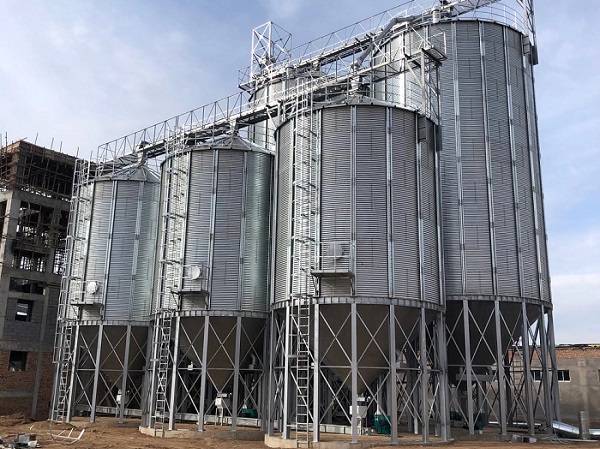
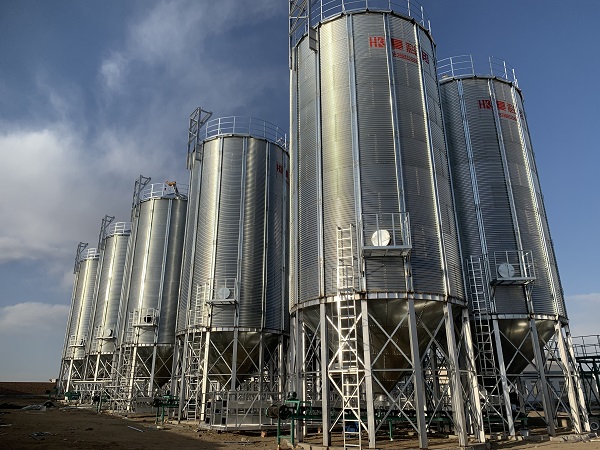
Structure of pig feed silo
Silo Body
This is the core part of the silo, typically made from metal materials such as galvanized steel, designed in a cylindrical or slightly conical shape to facilitate the storage and flow of feed.
Silo Cover
Located at the top of the silo, it protects the feed from external environmental factors like rain and dust, and also helps to maintain the freshness of the feed.
Conical Bottom
The conical structure at the bottom of the silo aids in the flow and unloading of feed, reducing residue at the bottom of the silo.
Discharge Outlet
Positioned at the bottom of the conical section, this is where the feed is discharged from the silo. Some silos may be equipped with an automatic unloading system to facilitate the extraction of feed.
Ladders and Platforms
To facilitate access for inspection and maintenance, ladders and platforms are typically installed on the exterior or interior of the silo.
Legs or Supports
The silo is usually supported by legs or supports to keep the structure stable and allow for feed storage above the ground.
Feeding System
Includes equipment used to fill the silo with feed, such as screw conveyors, belt conveyors, or pneumatic conveying systems.
Ventilation System
Some silos are equipped with ventilation openings or columns to ensure proper aeration during feed storage, reducing humidity and the growth of mold.
Monitoring System
Modern silos may include sensors and equipment for monitoring the internal environment of the silo, such as temperature and humidity.
Anti-Corrosion Treatment
The surface of the silo may be treated with special processes, such as hot-dip galvanizing, to enhance its corrosion resistance and extend its service life.
Seals and Edges
Seals may be installed at the joints and edges of the silo to prevent rainwater from entering.
Additional Accessories
Depending on specific needs, the silo may also be equipped with additional accessories such as breather valves, level indicators, and weighing systems.
These components work together to ensure the functionality, stability, and safety of pig feed silo, making them effective for the storage needs of the feed industry in animal farming.
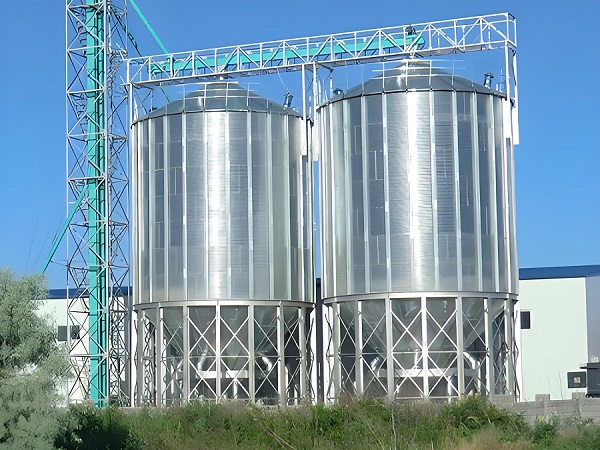
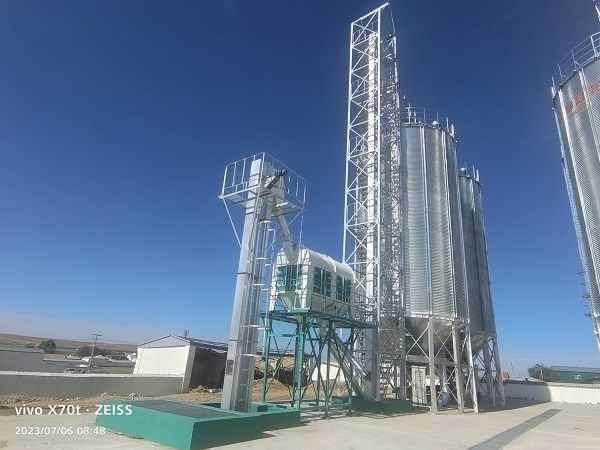
Advantages of pig feed silo
Efficient Storage
Silos allow for the bulk storage of feed, reducing the need for frequent purchases and transportation, thereby lowering costs.
Feed Quality Protection
The design of silos protects the feed from external environmental factors such as weather, pests, and microorganisms, maintaining the freshness and nutrition of the feed.
Compatibility with Automated Feeding Systems
Modern silo designs are usually compatible with automated feeding systems, enhancing farming efficiency and reducing manual labor.
Waste Reduction
By minimizing the feed’s exposure to external environments, silos help reduce feed loss due to weather, pests, and improper storage.
Easy Monitoring and Management
Silos are typically equipped with monitoring systems that facilitate real-time monitoring of feed inventory and quality.
Durability
Made with high-quality materials and anti-corrosion treatments, silos have a long service life, reducing the frequency of maintenance and replacement.
Flexibility
The design of silos allows for a variety of sizes and shapes, which can be customized according to the specific needs and site conditions of the farm.
Cost-Effectiveness
Although the initial investment may be higher, silos have lower operating costs over time, and due to their durability, they do not require frequent replacement.
Safety
The structural stability and safety features of silos reduce safety risks during the storage process.
Environmental Adaptability
Silo designs take into account different climatic conditions and can be stably used in a variety of environments.
Ease of Cleaning and Maintenance
Due to their simple structure and often self-cleaning features, silos are easy to regularly clean and maintain.
Promoting Farm Modernization
The use of silos is a sign of the development of the livestock industry towards modernization and scaling, which helps to improve overall production efficiency.
Reduced Cross-Contamination
The use of silos helps to reduce cross-contamination between different feeds or raw materials, enhancing food safety.
Space Saving
The compact design of silos occupies a small amount of space, making them suitable for farms with limited land.
These advantages make pig feed silos an essential part of modern breeding farms, helping to improve breeding efficiency and economic benefits.
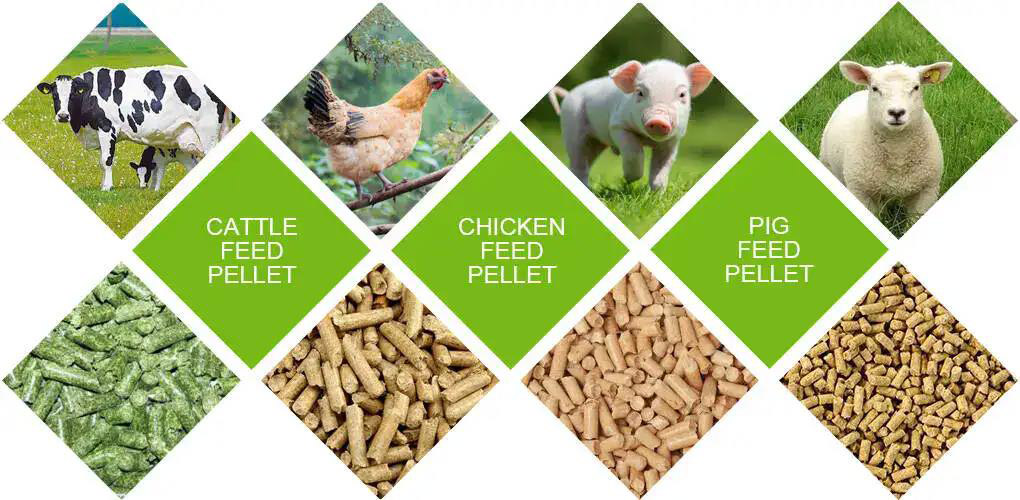
Application scope of pig feed silo
Pig farms
Used to store feed required for large-scale pig farms, ensuring sufficient supply and convenient usage.
Breeding facilities
Suitable for pig breeding facilities of various scales, providing effective feed storage and management.
Feed processing plants
As part of feed production lines, used to temporarily store produced feed for subsequent packaging or sale.
Farmers
Suitable for individual breeders or small-scale farms, helping them manage feed supply effectively and reduce waste.
In summary, pig feed silo have a wide range of applications in pig farming facilities and feed production plants of various scales, providing convenient, safe, and efficient solutions for feed storage in the farming industry.
pig feed silo technical parameters
Scientifically speaking, the Silo capacity should be measured with volume (m3). Even in the same grain Silo, the storage tons will be different for different grains with different densities. The following table is calculated based on a Silo density of 0.75kg/m3, and surely HKB customizes Silo systems unique for you.
| Most Popular Hopper Bottom Steel Silo Technical Specifications | ||||||||
| Capacity | 50Ton | 100Ton | 150Ton | 200Ton | 300Ton | 500Ton | 1000Ton | 1500Ton |
| Model | TCZK
03605 |
TCZK
04507 |
TCZK
05507 |
TCZK
06406 |
TCZK
07307 |
TCZK
07313 |
TCZK
11010 |
TCZK
12811 |
| Diameter(m) | 3.667 | 4.584 | 5.500 | 6.417 | 7.334 | 7.334 | 11.000 | 12.834 |
| Total Height(m) | 9.56 | 12.53 | 13.25 | 12.85 | 14.70 | 21.42 | 20.95 | 23.51 |
| Volume(m³)
Density:0.75ton/m³ |
69 | 150 | 222 | 273 | 415 | 699 | 1346 | 2039 |
| Most Popular Flat Bottom Steel Silo Technical Specifications | ||||||||
| Capacity | 1000Ton | 1500Ton | 2000Ton | 2500Ton | 3000Ton | 5000Ton | 8000Ton | 10000Ton |
| Model | TCK
10014 |
TCK
11915 |
TCK
13715 |
TCK
15514 |
TCK
15518 |
TCK
18321 |
TCK
24718 |
TCK
25621 |
| Diameter(m) | 10.084 | 11.918 | 13.750 | 15.584 | 15.584 | 18.334 | 24.751 | 25.668 |
| Total Height(m) | 18.69 | 20.34 | 20.87 | 20.30 | 24.78 | 28.60 | 26.99 | 30.60 |
| Volume(m³)
Density: 0.75ton/m³ |
1335 | 2009 | 2701 | 2467 | 4145 | 6693 | 10879 | 13484 |

